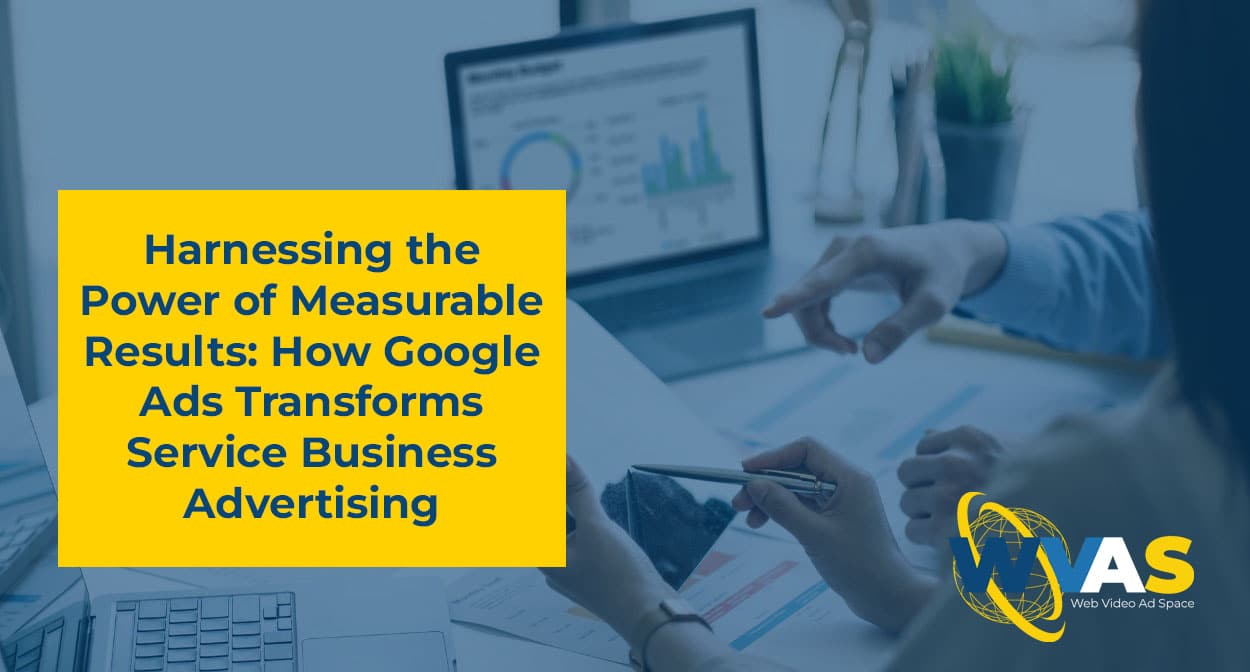In the ever-evolving landscape of digital advertising, service businesses are constantly seeking ways to maximize their online presence and attract potential customers. One of the most powerful tools at their disposal is Google Ads, a platform that not only enables businesses to reach their target audience but also provides a wealth of measurable results. These results allow businesses to track, analyze, and optimize their advertising efforts, ultimately driving more leads, conversions, and revenue.
Understanding the Significance of Measurable Results
Before delving into the specifics of Google Ads, it’s essential to understand why measurable results are so crucial for service businesses. In the past, traditional advertising methods, such as print ads or billboards, offered limited insights into their effectiveness. Businesses would invest significant amounts of money into these campaigns without a clear understanding of their impact on the bottom line.
In contrast, the digital age has ushered in a new era of advertising, one where data reigns supreme. With the ability to track and measure every aspect of an online campaign, businesses can now make informed decisions based on real-time insights. This data-driven approach allows service businesses to optimize their advertising efforts, ensuring that every dollar spent is working towards achieving their marketing goals.
The Power of Google Ads Analytics and Reporting

One of the key advantages of Google Ads is its ability to generate detailed reports on a wide range of metrics. These metrics include click-through rates (CTR), conversion rates, cost per click (CPC), and return on ad spend (ROAS), among others. By analyzing these metrics, service businesses can gain a deep understanding of how their ads are performing and identify areas for improvement.
Key Metrics to Monitor
Click-Through Rate (CTR)
CTR is a fundamental metric that measures the percentage of people who click on an ad after viewing it. A high CTR indicates that an ad is relevant and engaging to the target audience. By monitoring CTR, service businesses can gauge the effectiveness of their ad copy, visuals, and targeting settings. If an ad has a low CTR, it may be a sign that the messaging or targeting needs to be refined to better resonate with the intended audience.
Conversion Rate
Cost Per Click (CPC)
Return on Ad Spend (ROAS)
Leveraging Data for Campaign Optimization
While monitoring key metrics is essential, the true value of measurable results lies in their ability to inform campaign optimization. Google Ads provides a wealth of data that service businesses can leverage to refine their advertising strategies and maximize their ROI.

A/B Testing
One of the most powerful optimization techniques available in Google Ads is A/B testing. Also known as split testing, A/B testing allows businesses to compare the performance of different ad variations to determine which elements resonate best with their target audience. By running controlled experiments, service businesses can test various aspects of their ads, such as headlines, descriptions, images, or call-to-action buttons.
For example, a home cleaning service might create two versions of an ad: one that emphasizes the quality of their services and another that focuses on their competitive pricing. By running an A/B test, they can determine which messaging approach leads to higher click-through rates and conversions. Armed with this knowledge, the business can optimize their ad copy to drive better results.

Keyword Optimization
Keywords play a crucial role in the success of any Google Ads campaign. They are the bridge that connects a service business’s ads with potential customers who are actively searching for their services. By monitoring the performance of individual keywords, businesses can identify which terms are driving the most clicks, conversions, and revenue.
Google Ads provides detailed keyword data, including impressions, clicks, CPC, and conversion rates. By analyzing this data, service businesses can identify high-performing keywords and allocate more budget towards them. Conversely, underperforming keywords can be paused or removed from the campaign, ensuring that ad spend is focused on the most effective terms.

Audience Refinement
Another way to optimize campaigns using measurable results is through audience refinement. Google Ads provides detailed insights into the demographics, interests, and behaviors of ad viewers. By analyzing this data, service businesses can gain a deeper understanding of their target audience and tailor their campaigns accordingly.
For instance, a landscaping company might discover that a significant portion of their ad clicks come from homeowners aged 35-54 with an interest in gardening. Armed with this knowledge, the company can refine their targeting settings to focus on this specific audience segment, increasing the relevance and effectiveness of their ads.

Budget Allocation
Measurable results also play a vital role in budget allocation. With limited advertising resources, service businesses must ensure that their ad spend is allocated effectively to maximize ROI. Google Ads provides data-driven insights that can help businesses make informed decisions about budget distribution.
By analyzing the performance of individual campaigns, ad groups, and keywords, service businesses can identify areas that are delivering the highest returns. They can then prioritize these high-performing elements and allocate more budget towards them. Conversely, underperforming campaigns or ad groups can have their budgets reduced or be paused entirely, ensuring that every advertising dollar is working towards achieving the business’s goals.

Real-Time Optimization
One of the most significant advantages of Google Ads is the ability to monitor and optimize campaigns in real-time. Unlike traditional advertising methods, where results could take weeks or months to materialize, Google Ads provides instant feedback on campaign performance.
Service businesses can leverage this real-time data to make swift adjustments to their campaigns. If an ad is not generating the desired results, changes can be made immediately to improve its performance. This agility allows businesses to stay responsive to market trends, customer behavior, and competitor activity, ensuring that their campaigns remain effective and relevant.
Conclusion
In the highly competitive world of digital advertising, measurable results are the key to success for service businesses. Google Ads provides a powerful platform that not only enables businesses to reach their target audience but also offers a wealth of data and insights to optimize their campaigns.
By monitoring key metrics such as click-through rates, conversion rates, cost per click, and return on ad spend, service businesses can make data-driven decisions to refine their advertising strategies. Through techniques like A/B testing, keyword optimization, audience refinement, and budget allocation, businesses can leverage measurable results to drive more leads, conversions, and revenue.
The real-time nature of Google Ads allows service businesses to stay agile and responsive, making adjustments to their campaigns on the fly to maximize their ROI. By embracing the power of measurable results, service businesses can thrive in the competitive online landscape and achieve their marketing goals with confidence.
In today’s data-driven world, measurable results are no longer a luxury but a necessity. Service businesses that harness the power of Google Ads and its analytics capabilities will be well-positioned to succeed in the ever-evolving digital advertising landscape. By making data-informed decisions and continuously optimizing their campaigns, these businesses can unlock the full potential of their online advertising efforts and drive sustainable growth for years to come.


